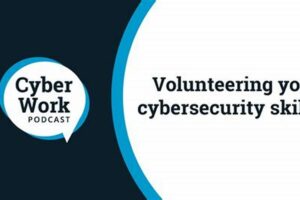Table of Contents
Becoming a volunteer EMT is a great way to serve your community and gain valuable medical experience. EMTs provide emergency medical care to people who are sick or injured, and they can work in a variety of settings, including ambulances, fire departments, and hospitals.
If you’re interested in becoming a volunteer EMT, there are a few steps you’ll need to take. First, you’ll need to complete an EMT training course. This course will teach you the skills you need to provide emergency medical care, including how to assess a patient’s condition, how to perform CPR, and how to use medical equipment.
Once you’ve completed your EMT training course, you’ll need to pass a national certification exam. This exam will test your knowledge of emergency medical care and ensure that you’re competent to provide care to patients.
How to Become a Volunteer EMT
Follow these steps to become a volunteer EMT:
- Research local EMT programs
- Meet program requirements
- Complete EMT training course
- Pass national certification exam
- Apply for volunteer EMT position
- Undergo background check
- Attend orientation and training
- Start volunteering as an EMT
- Gain experience and skills
- Pursue further education and training
Becoming a volunteer EMT is a rewarding experience that allows you to serve your community and make a difference in people’s lives.
Research Local EMT Programs
Once you’ve decided that you want to become a volunteer EMT, the first step is to research local EMT programs. There are many different EMT programs available, so it’s important to find one that is accredited and that meets your needs.
When researching EMT programs, you should consider the following factors:
- Accreditation: Make sure the program is accredited by a reputable organization, such as the Commission on Accreditation of Allied Health Education Programs (CAAHEP).
- Location: Choose a program that is located near your home or work so that you can easily attend classes and clinical rotations.
- Schedule: Consider your schedule and choose a program that offers classes and clinical rotations that fit your needs.
- Cost: EMT programs can vary in cost, so be sure to compare the costs of different programs before making a decision.
- Reputation: Talk to other EMTs in your area and ask them about their experiences with different programs. This can help you get a sense of the quality of the programs in your area.
Once you’ve considered these factors, you can start narrowing down your choices. You can find a list of accredited EMT programs on the CAAHEP website.
Once you’ve found a few programs that you’re interested in, you can contact the programs and request more information. You can also visit the programs in person to get a feel for the environment and to meet the instructors.
Meet Program Requirements
Once you’ve chosen an EMT program, you’ll need to meet the program’s requirements. These requirements may vary from program to program, but they typically include the following:
- Age: Most EMT programs require applicants to be at least 18 years old.
- Education: Some EMT programs require applicants to have a high school diploma or GED, while others do not. Check with the program you’re interested in to find out their requirements.
- Health: EMTs must be in good physical and mental health. You’ll need to pass a physical exam and a background check before you can be admitted to an EMT program.
- Criminal background: EMTs must have a clean criminal record. You’ll need to pass a background check before you can be admitted to an EMT program.
- CPR and First Aid certification: Most EMT programs require applicants to have current CPR and First Aid certification. You can get these certifications through the American Red Cross or another reputable organization.
In addition to these general requirements, some EMT programs may have additional requirements, such as a minimum GPA or a certain number of volunteer hours. Be sure to check with the program you’re interested in to find out their specific requirements.
If you don’t meet all of the requirements for an EMT program, don’t give up. There are many ways to prepare yourself for an EMT program. You can take classes to improve your math and science skills, get CPR and First Aid certified, and volunteer with your local ambulance service or fire department.
Complete EMT Training Course
The EMT training course is the most important part of becoming an EMT. This course will teach you the skills you need to provide emergency medical care to patients.
- EMT Course Length: EMT courses typically last between 120 and 150 hours. The length of the course will vary depending on the program you choose.
- EMT Course Topics: EMT courses cover a variety of topics, including:
- Anatomy and physiology
- Medical terminology
- Patient assessment
- CPR and First Aid
- Emergency medical procedures
- Patient transportation
- EMT Clinical Rotations: In addition to classroom instruction, EMT students must also complete clinical rotations. During clinical rotations, students will work with experienced EMTs in a variety of settings, such as ambulances, fire departments, and hospitals.
- EMT Certification Exam: Once you have completed your EMT training course, you will need to pass a national certification exam. This exam will test your knowledge of emergency medical care and ensure that you are competent to provide care to patients.
The EMT training course is a challenging but rewarding experience. It will prepare you for a career as an EMT and give you the skills you need to save lives.
Pass National Certification Exam
Once you have completed your EMT training course, you will need to pass a national certification exam. This exam is administered by the National Registry of Emergency Medical Technicians (NREMT).
- NREMT Exam Format: The NREMT exam consists of two parts: a cognitive exam and a psychomotor exam.
- Cognitive Exam: The cognitive exam is a multiple-choice exam that covers a variety of topics, including:
- Patient assessment
- Medical terminology
- Emergency medical procedures
- Patient transportation
- Psychomotor Exam: The psychomotor exam is a hands-on exam that tests your ability to perform EMT skills, such as:
- CPR
- First Aid
- Patient assessment
- Emergency medical procedures
- NREMT Exam Passing Score: To pass the NREMT exam, you must score a minimum of 70% on both the cognitive exam and the psychomotor exam.
The NREMT exam is a challenging exam, but it is also a fair exam. If you have studied hard and prepared yourself well, you should be able to pass the exam on your first attempt.
Apply for Volunteer EMT Position
Once you have passed the NREMT exam, you can start applying for volunteer EMT positions. There are many different organizations that hire volunteer EMTs, including:
- Ambulance Services: Many ambulance services hire volunteer EMTs to help provide emergency medical care to patients.
- Fire Departments: Some fire departments also hire volunteer EMTs to help provide emergency medical care at fire scenes and other emergencies.
- Hospitals: Some hospitals hire volunteer EMTs to help transport patients and provide other non-emergency medical care.
- Private Organizations: There are also a number of private organizations that hire volunteer EMTs to provide medical care at events, such as concerts and sporting events.
To apply for a volunteer EMT position, you will need to submit an application and a resume. You may also need to pass a background check and a drug test. Once you have been hired, you will need to complete an orientation and training program before you can start volunteering.
Undergo Background Check
As part of the application process for a volunteer EMT position, you will need to undergo a background check. This background check will typically include a criminal history check and a driving record check.
The purpose of the background check is to ensure that you are a safe and responsible individual who is fit to be an EMT. The background check will look for any criminal convictions that could pose a risk to patients or coworkers. It will also look for any driving violations that could make you a liability while driving an ambulance or other emergency vehicle.
If you have any criminal convictions or driving violations on your record, you may still be able to become a volunteer EMT. However, you will need to disclose these convictions or violations to the organization that is hiring you. The organization will then decide whether or not you are a suitable candidate for the position.
In most cases, a background check for a volunteer EMT position will be fairly straightforward. However, there may be some cases where the background check is more extensive. For example, if you are applying for a position with a government agency, the background check may be more thorough.
Attend Orientation and Training
Once you have been hired as a volunteer EMT, you will need to attend an orientation and training program. This program will typically cover the following topics:
- The organization’s policies and procedures
- The equipment and supplies that you will be using
- How to respond to different types of emergencies
- How to communicate with patients and their families
- How to work as part of a team
The orientation and training program will also give you the opportunity to practice your skills in a controlled environment. You will work with experienced EMTs who can provide you with feedback and guidance.
The length of the orientation and training program will vary depending on the organization that you are volunteering with. However, most programs will last for at least 24 hours.
Once you have completed the orientation and training program, you will be ready to start volunteering as an EMT. You will be assigned to a team of EMTs and you will respond to emergencies in your community.
Start Volunteering as an EMT
Once you have completed your orientation and training, you will be ready to start volunteering as an EMT. You will be assigned to a team of EMTs and you will respond to emergencies in your community.
- Your First Shift: Your first shift as an EMT will be a mix of excitement and nerves. You will be eager to help people, but you may also be feeling a little bit overwhelmed. Don’t worry, this is normal. Just take things one step at a time and you will soon be feeling comfortable in your role.
- Your Responsibilities: As an EMT, you will have a variety of responsibilities, including:
- Responding to emergency calls
- Assessing patients’ conditions
- Providing emergency medical care
- Transporting patients to the hospital
- Working as part of a team
- The Rewards of Volunteering: Volunteering as an EMT is a rewarding experience. You will have the opportunity to help people in their time of need and make a difference in your community. You will also learn valuable skills and gain experience that will benefit you in your personal and professional life.
- Continuing Your Education: Once you have started volunteering as an EMT, you can continue your education and training to become a more skilled and experienced EMT. You can take additional courses, attend conferences, and participate in continuing education programs.
Volunteering as an EMT is a great way to give back to your community and make a difference in people’s lives. It is also a rewarding experience that can help you learn valuable skills and gain experience that will benefit you in your personal and professional life.
Gain Experience and Skills
As you volunteer as an EMT, you will gain valuable experience and skills. These skills will benefit you both in your personal and professional life.
Some of the skills that you will learn as an EMT include:
- Patient assessment skills
- Emergency medical care skills
- Communication skills
- Teamwork skills
- Problem-solving skills
- Critical thinking skills
In addition to these general skills, you will also learn specific skills related to emergency medical care, such as:
- How to use medical equipment
- How to administer medication
- How to perform CPR and other life-saving procedures
- How to transport patients safely
The experience and skills that you gain as an EMT will make you a more valuable asset to your community and to your employer. You will also be better prepared to handle medical emergencies in your personal life.






